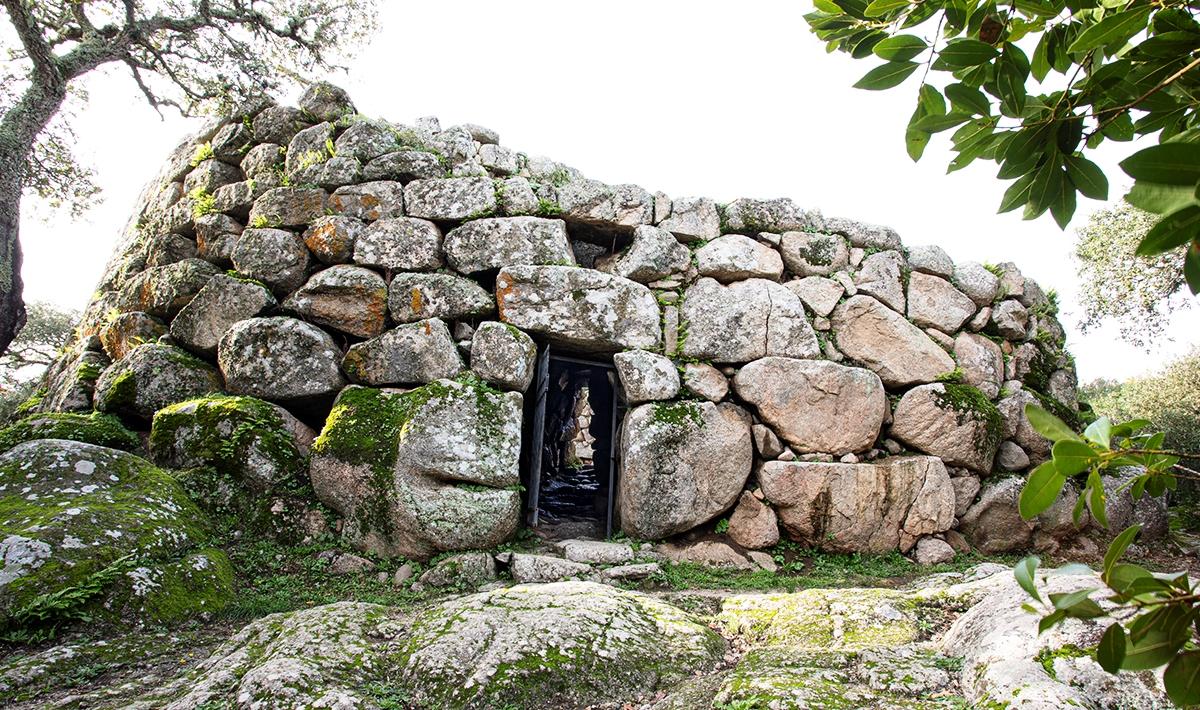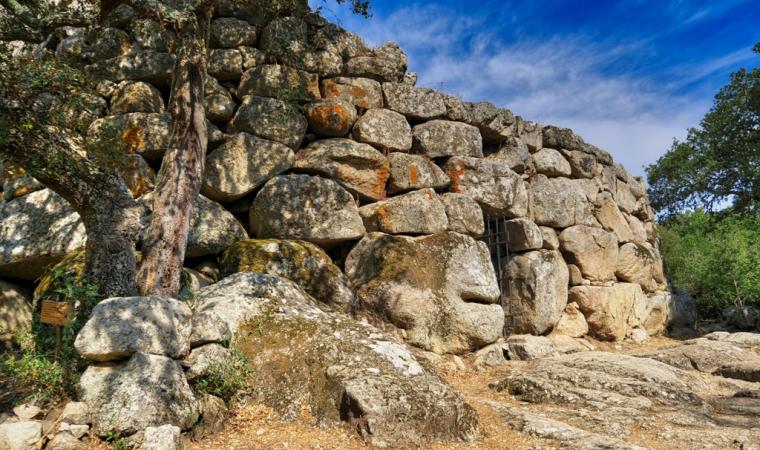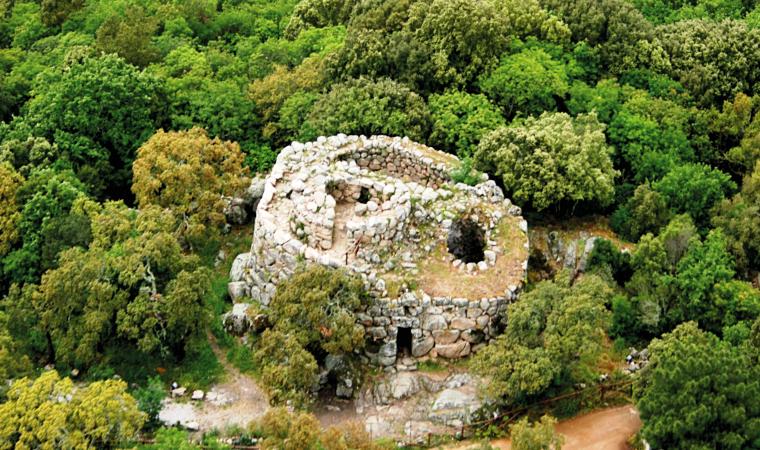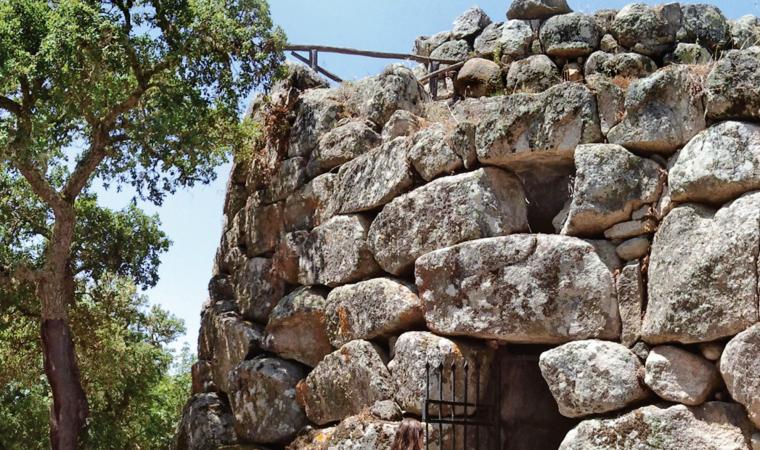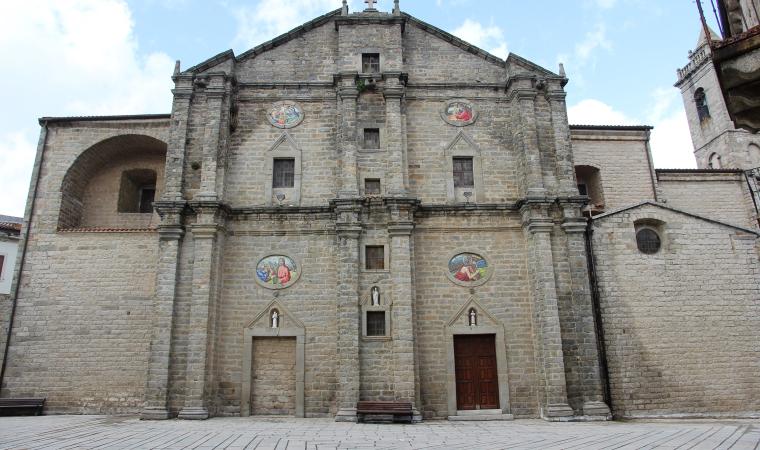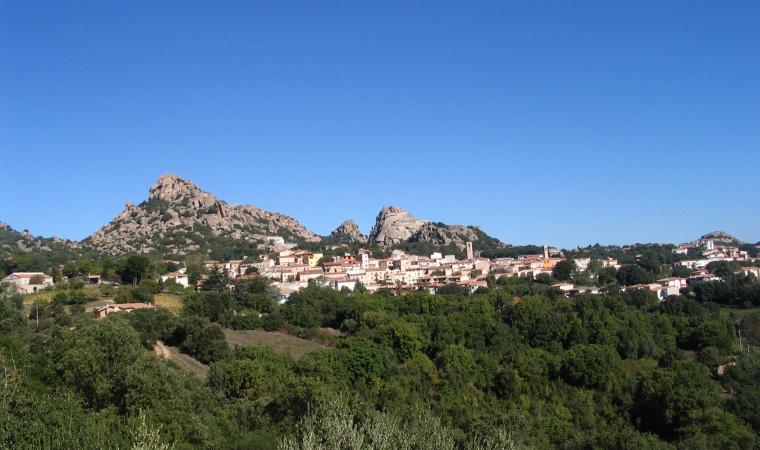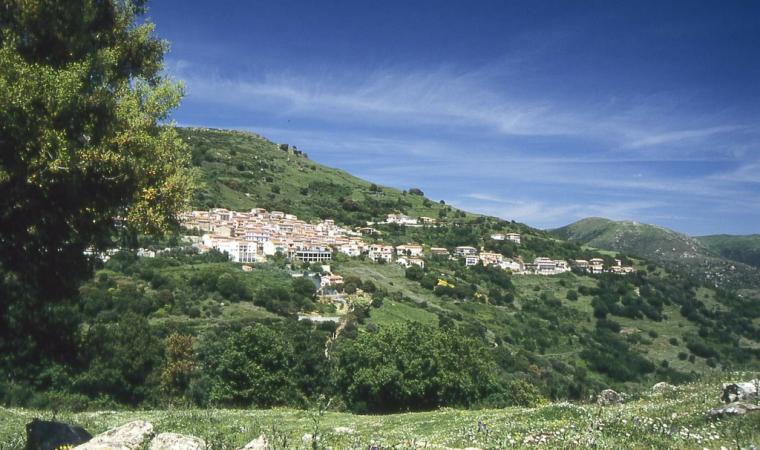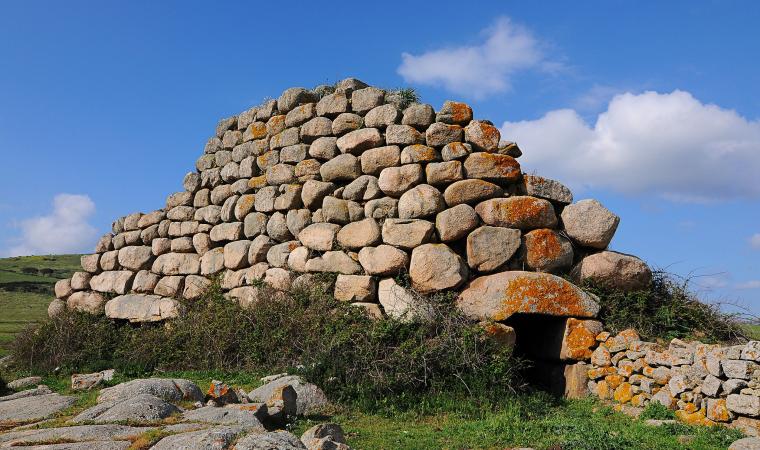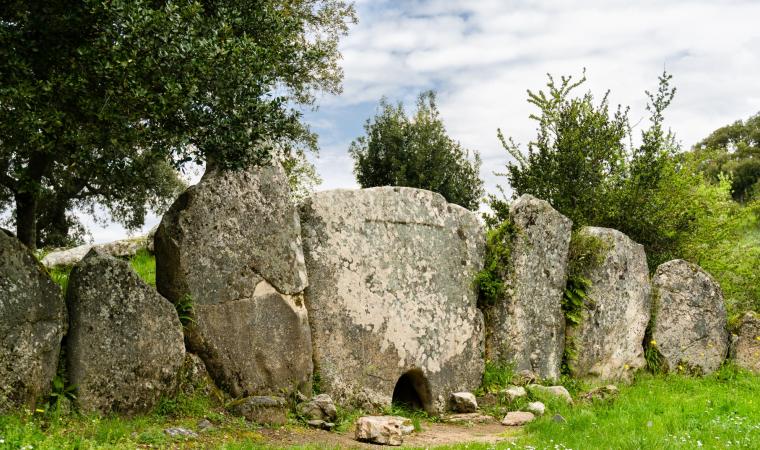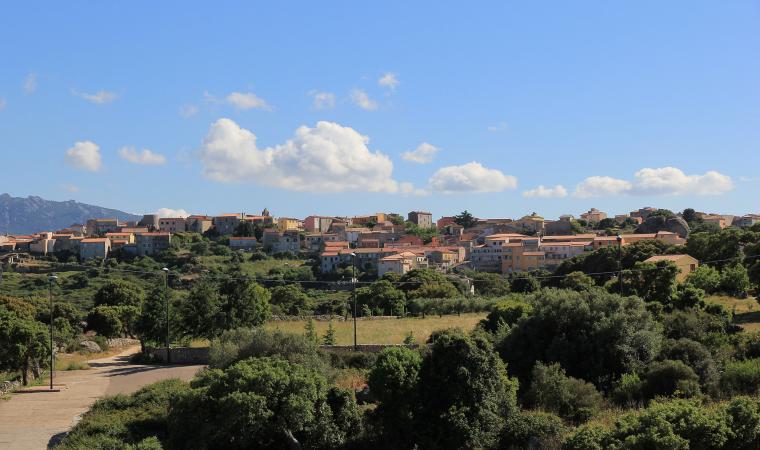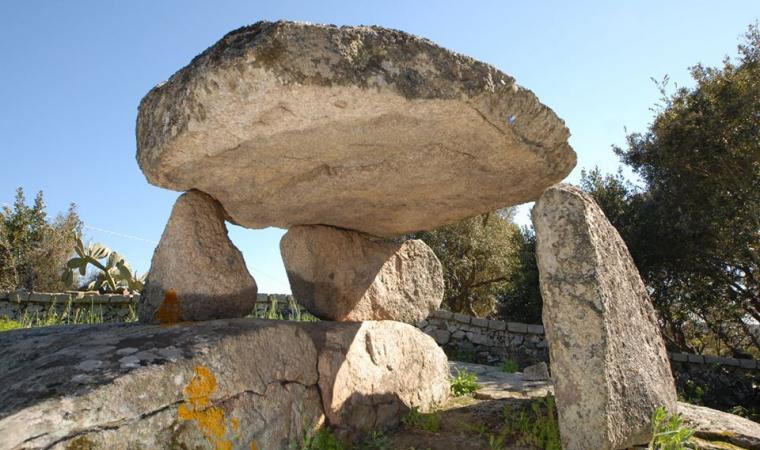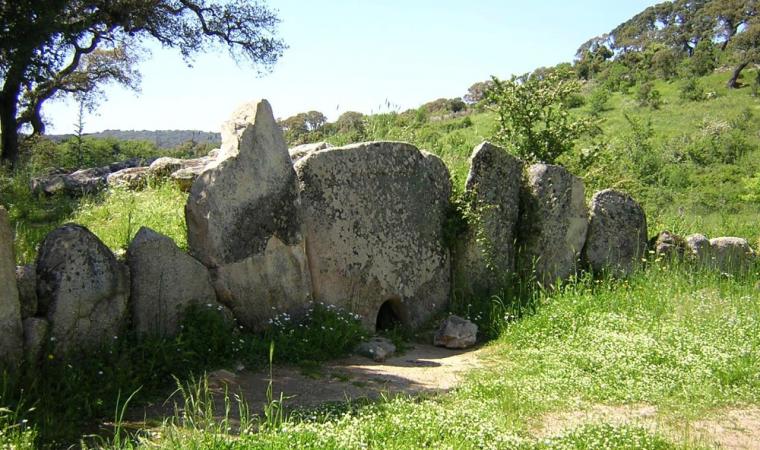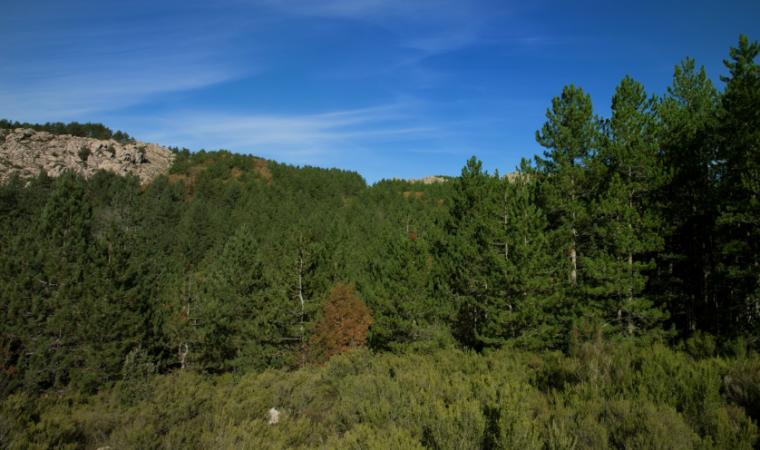A 3500-year-old fortress, symbol of the evolution of the Nuragic civilisation, enchanting thanks to the natural scenery all around it and populated by a colony of small very rare bats. The nuraghe Majori is perched on a granite ‘dome’ at an altitude of 500 metres and emerges in the midst of a lush wood of cork oaks, ash trees, holm oaks, downy oaks, Mediterranean plant species and a carpet of cyclamen and orchids brightening up the grey of the rocks. Well-preserved and available to be enjoyed throughout, it is the archaeological ‘pearl’ of Tempio Pausania, one of the most significant protohistoric monuments in Gallura, nestled between the Aggius mountains and the park of the Limbara massif and dotted with trekking and mountain bike itineraries. From the historic centre of Tempio, the ‘city of stone’, the archaeological area is less than two kilometres away on state road SS 133 in the Palau direction.
The totally granite architecture is a fascinating mixture of construction elements typical of both ‘corridor-type’ nuraghi (or protonuraghi) and tholos (false dome) nuraghi. The name 'Majori', meaning major, comes from the large size of the rocks, roughly-hewn and put in place for its construction during the Middle and Late Bronze Age (16th-12th century BC). From the hill covered in greenery on which it stands, the Majori dominates the surrounding valleys and, together with another ten nearby nuraghi, controls most of the upper Gallura area. Its majesty and strategic position are clear evidence of the important role it played in the past. The massive single-tower structure incorporates rocky outcrops that influenced its irregular development. Access is via an architrave entrance, built using smaller rocks, better crafted than the rest of the complex and facing south-east to capture as much light as possible, as well as being sheltered from the northwesterly wind. The entrance corridor is almost ten metres long and one and a half metres wide. The initial part is covered by horizontal slabs, after which it has an ogival section. The corridor crosses the entire internal area longitudinally - as is customary in protonuraghi - and then emerges at the back of the building onto a large semicircular courtyard. Halfway along, the entrances to two ovoid shaped rooms open up in the walls, covered by a rudimentary tholos, a sign of the architectural evolution in progress. The flooring of the entire ground floor is paved. Inside the smaller room, you will notice a silo for storing foodstuffs. In the larger one, the big surprise is: a colony of bats, among the smallest in the world, six centimetres long and with a wingspan of 22 cm. Every year, they arrive in mid-April and migrate in October. Small groups can enter to admire them, keeping in mind that flashes are banned. You can go up a flight of steps in the courtyard to the upper floor: here, the remaining structures suggest the original existence of a circular room and a room on the opposite side. The theory is in line with the graphic reconstruction made by General Alberto La Marmora in the mid-19th century, based on which two towers appear on the second floor, with the same layout as the floor below. Today, from the terrace of the bastion, you can observe the entire surrounding valley. Archaeological excavations have unearthed signs of daily life in the Nuragic age - pottery, bowls, cups, earthen jars, pans and baking dishes -, they have provided clues about the existence of a village of stone huts around the fortress and have made it possible to reconstruct the various phases of life. Some artefacts date back to the Imperial Roman era, including a coin from the period of Antoninus Pius, fragments of urns and 'terra sigillata' pottery, while rock crystal ‘pieces’ appear to indicate links with other Nuragic sites and with neighbouring Corsica. For some years, archaeologists and tour guides have been looking after the site, with guided tours, educational workshops and simulations of excavations.
The archaeological area’s ticket office can be reached via a walk in the shade of the cork oak groves. The visit continues with a nature trail around the monument. Not far away is Monte Pulchiana, the largest monolith on the Island, a stone ‘giant’ shaped like a panettone Christmas cake, 110 metres high, with a diameter of 120 metres at its base.
The Majori is part of the ‘Gallura routes of megalithism’ that start from the archaeological park of Arzachena, stopping off at Luras, at the dolmen of Ladas, Alzoledda and Ciuledda, and at the Tombs of Giants of Pascaredda in Calangianus. Around Tempio, you can also admire another twenty or so Nuragic sites.

